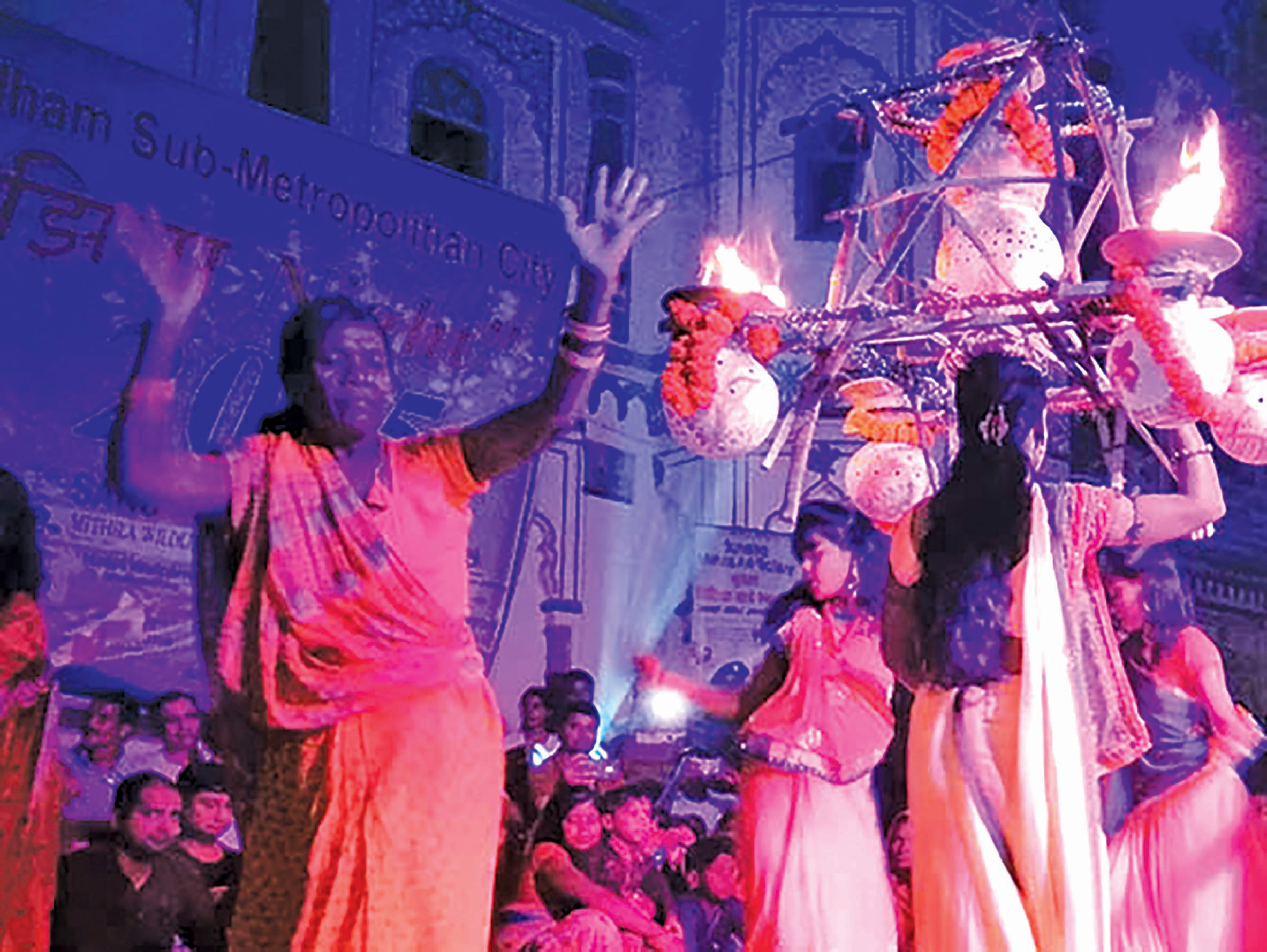Social Relevance Of Jhijhiya Folk Dance

Rambharos Kapari 'Bhramar'
The world is changing. Similarly, all the deities here are changing. Man is imitating the eyes of other civilisations. If anything in this society is untouched by this change or duplication, then it is our culture. Indeed, our culture has protected our existence.
Like other areas, the cultural tradition of Mithila is very old which has remained intact even up to the present era. The ancient literature of folklore, folk ballad, folk story, etc., which have remained intact since ancient times, is still prevalent in folklore.
Drama, Dance Tradition
A drama and dance tradition is also alive in the villages under the protection of rural women. That is folk dance- 'Jhijhiya'. In Mithilanchal, the Jhijhiya folk dance is presented by women in praise to the Goddess.
Jhijhia is celebrated in most areas of Mithila from the establishment of Kalas on the auspicious occasion of Bijaya Dashami with great cheer.
It consists of a team of girls about five to fifteen, of which two or even special ones are placed on the head pitcher with numerous holes made. The flames of the fire are very much ignited when the fire is kept in the base of the Kalash bell, adding fire to it from time to time.
The girls' dance in particular rhythm in all different songs and go home to the villagers and ask for something to complete. With all these demanded rupees or rice, on the last day, i.e. the tenth day, the big dances 'Jhijhiya' are displayed by dancing and singing according to their ability. In the village, this kind of team varies from one to four. The programme of the last day is filled with a competitive spirit, and they are on the verge of immersing themselves in their 'Jijhiya'.
The dancing of Jhjhiya is always light, which no one can count. It is said that if someone or a witch can count the hole, the dancer will die. So even when standing, the head holder is always shaking. No evidence has been obtained so far as to what degree Jhijhiya originated.
Although this tradition is fulfilled by the Tantric method, it can be inferred that its origin began in Mithila from the full time of the Tantra-Mantra. It is said to have originated from the 6th to the 7th centuries, and it seems to have differed in its ancient form.
Earlier, the masters of the technical system were Mali and Malini, and therefore the worship of the deities was mainly from this class. Even today, flower rings or various accessories required for the deities are prepared by the gardener. Therefore, the Jhijhiya which is completely worshipped by the goddess was protected by the gardeners.
Jhijhiya dance is established as worship of Bhagwati Durga by Malinis, and has gradually become prevalent and protected in other sections of society today. It used to be performed on the 10th occasion and is still today too. But nowadays its performance has been minimal or even insignificant.
The texture of this membrane, inspired by the Tantric 'Cult', also has a special meaning. If the element placed on the Kalash is a symbol of the soul, then the flame (light) that comes out of it means the light emitted from the soul.
Also, since this membrane is designed to eliminate the effects of the witch, the darkness of the witch-light in the light of the light emitted by the soul makes it impossible to destroy anything.
Upanishads' Influence
The dance is influenced by our Upanishads - worshipping the Bhagwati called 'Light in the Light', this Jhijhiya team prays to the Goddess to "take it from darkness to light" and that is the main purpose of this folk dance. Padma, Benipatti, Madhuban, etc. are in Morang, Saptari, Siraha, Dhanusha, Mahottari, Sarlahi and some parts of Bihar's north section of Mithila area. Although it was starting to decay a little over five decades ago, it has started to show again commercially.
Jhijhiya teams first go to the Brahma Sthan (Village god) and start their worship. And from there they go to different people's houses in the village.
There are mainly two types of songs sung by the Jhijhiya Team. A song of worship of one Bhagwati or his deity is given to other witches.
The main victim of this team is Dionie, and so is the main song.
The lyrics of Jhijhiya are well-known, and its songs are sung in different places in different ways. Although the rhythm and the CHHAND are the same, the words seem to differ greatly.
In the songs sung in the form of worship of the Goddess, we find mainly details of Bhagwati's diet and behaviour.
(The writer is a freelancer)
Recent News

Do not make expressions casting dout on election: EC
14 Apr, 2022
CM Bhatta says may New Year 2079 BS inspire positive thinking
14 Apr, 2022
Three new cases, 44 recoveries in 24 hours
14 Apr, 2022
689 climbers of 84 teams so far acquire permits for climbing various peaks this spring season
14 Apr, 2022
How the rising cost of living crisis is impacting Nepal
14 Apr, 2022
US military confirms an interstellar meteor collided with Earth
14 Apr, 2022
Valneva Covid vaccine approved for use in UK
14 Apr, 2022
Chair Prachanda highlights need of unity among Maoist, Communist forces
14 Apr, 2022
Ranbir Kapoor and Alia Bhatt: Bollywood toasts star couple on wedding
14 Apr, 2022
President Bhandari confers decorations (Photo Feature)
14 Apr, 2022











